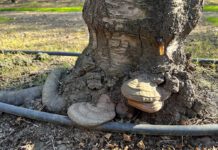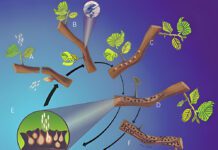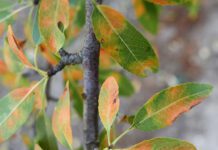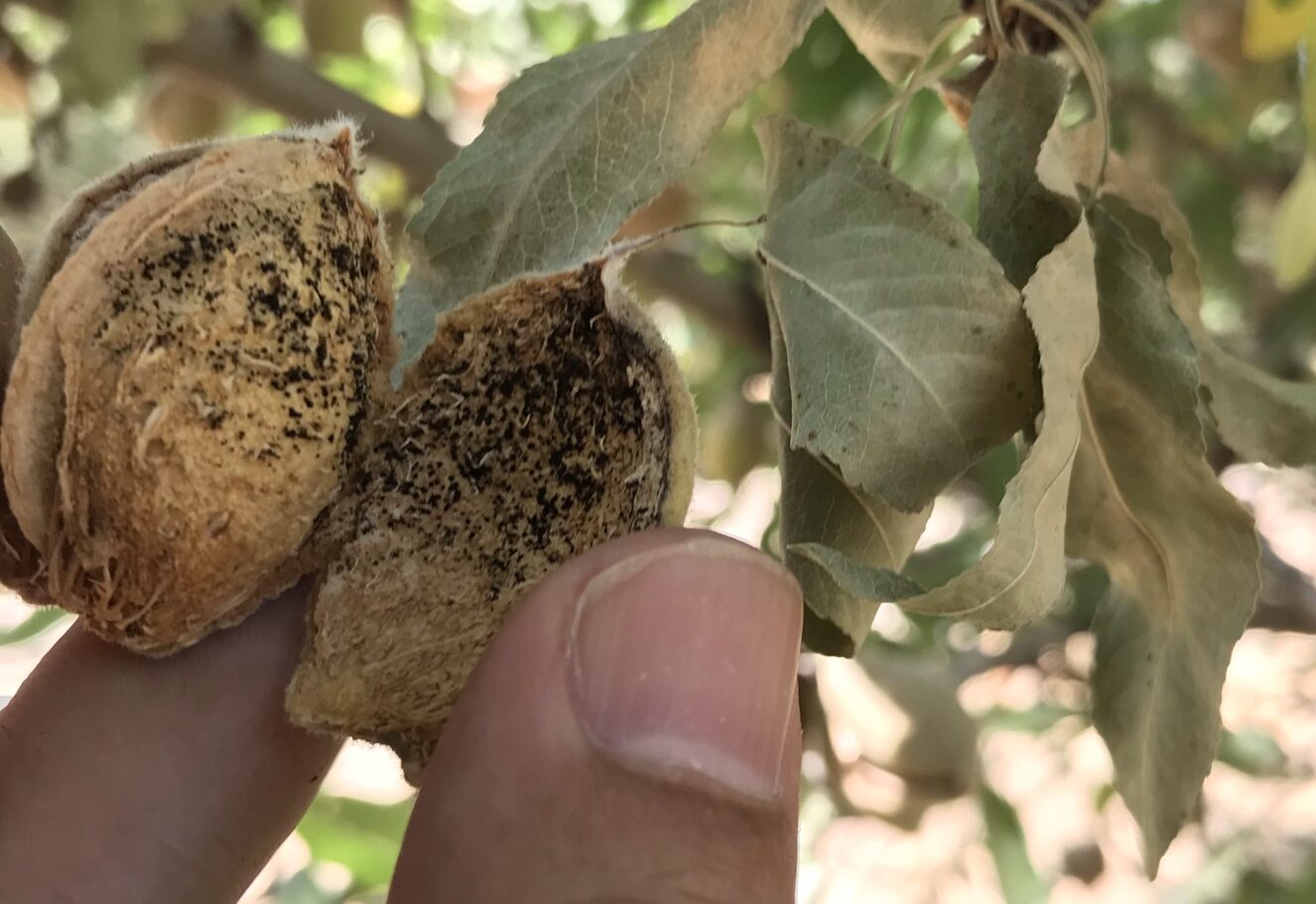
With proper fungicide applications, regulated deficit irrigation and adherence to a nitrogen management plan, a grower should be able to manage hull rot in almonds. But even then, it is no sure bet. And the consequences of letting this disease get away can be severe.
Left to its own devices, hull rot can inflict long- and short-term damage on almond orchards. It can reduce the bearing surface of trees by killing infected spurs and attached shoots and provide an overwintering host for navel orangeworm through infected sticktights that are not removed after harvest.
For years, researchers focused their efforts to control hull rot on targeting the two primary pathogens associated with the disease, Rhizopus stolonifer and Monilinia spp. In recent years, researchers have determined that a species of Phomopsis also could be causing hull rot, as well as the fungus Aspergillus niger, which for the past two years has been the focus of a research project.
Several facts have come to light thus far into the three-year Almond Board of California-backed project, including that fruit in the development stage is most susceptible to the disease, said Mohammad Yaghmour, UCCE farm advisor for Kern County. “And we know that it is in the soil and that it reaches the canopy on soil particles; so, pretty much dust contributes to the movement of the pathogen from the soil to the canopy.”
Some of the fungicides that are effective on Rhizopus- and Monilinia-caused hull rot, such as FRAC group three, seven and 11 fungicides, have been shown to also be effective on Aspergillus-caused hull rot, Yaghmour said. And symptoms of Aspergillus-caused hull rot are similar to symptoms of hull rot caused by the other pathogens in that leaves shrivel and then fruiting spores die.
But there are differences that merit attention. Black fungal growth on the inside of a hull, for example, indicates infection by Rhizopus. A tan fungal growth in the brown area on the inside or outside of the hull indicates infection by Monilinia. Symptoms of hull rot caused by Aspergillus niger, meanwhile, include flat, jet-black spores in between the shell and the hull.
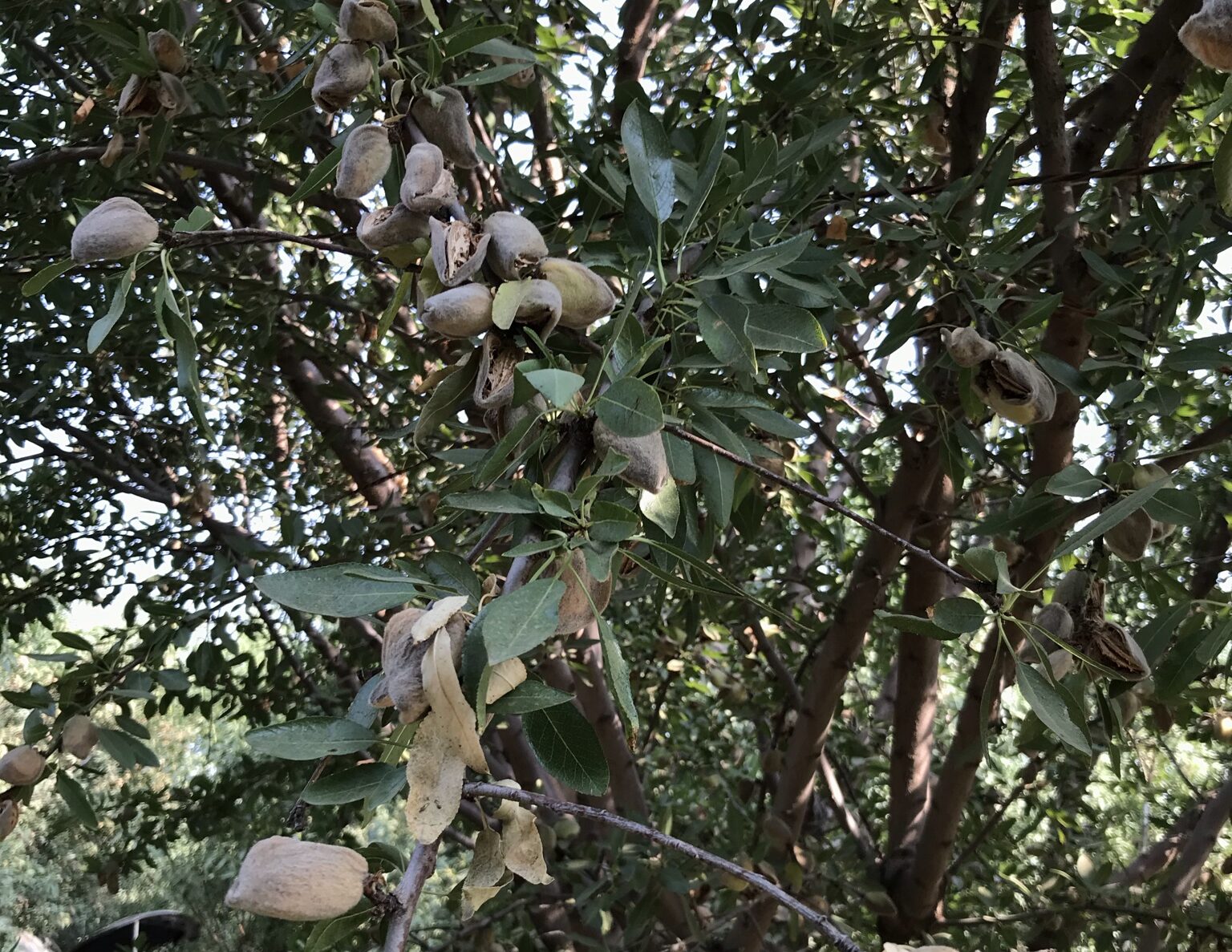
Treatment Timing
Identifying which pathogen is causing the rot is a key to determining when to treat for the disease, according to researchers. If targeting Rhizopus or Aspergillus, researchers recommend applying a fungicide at hullsplit. If targeting Monilinia, the recommendation is to apply a product three to four weeks before hullsplit.
In addition to proper timing, good coverage is also vital to the success of a treatment, Yaghmour said. “With the Rhizopus, for example, we know that the most susceptible stage is the very beginning of hull split. So, if you can protect the suture at that stage with good coverage, then most likely you will reduce the onset of disease incidence in your orchard.”
Because there is no predictive model for the disease, often the best indicator of whether to treat is whether an orchard has a history of developing hull rot. “In those cases, there might be a high spore load in the soil when we are considering hull rot caused by Rhizopus stolonifer,” Yaghmour said, “so that is an indication that the grower might need to use a fungicide.”
Yaghmour cautioned growers, however, from relying on fungicides for their control strategy. “Fungicides will not provide 100% control of this disease. You will need an IPM approach, involving good nitrogen and water management,” he said.
“We know for sure, for example, that regulated deficit irrigation will significantly reduce the hull rot in the orchard,” Yaghmour said. “And we know that if we over-fertilize with nitrogen, then, for sure, we are going to get high incidence of hull rot.”
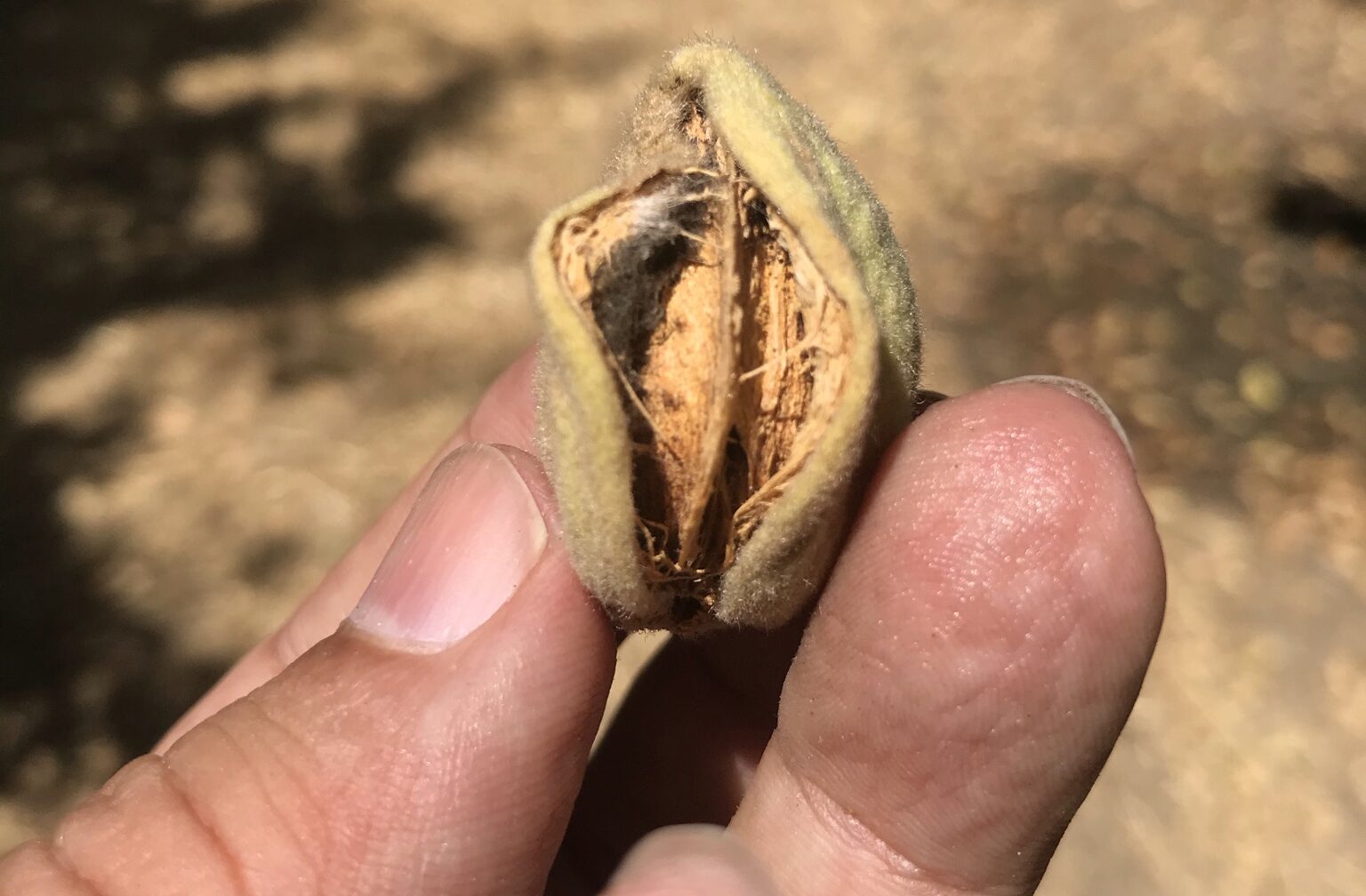
Modify N Based on Crop Load
Previous UC research has shown that nitrogen application rates above 250 pounds per acre resulted in trees most severely affected by hull rot, and hull rot strikes were higher in low crop years.
In order to reduce hull rot, nitrogen rates should be modified based upon crop load to keep the trees sufficient, the report noted. Further, the report recommended growers base nitrogen rates on analysis of leaf nitrogen content. “If properly sampled, the critical value for mid-summer leaf nitrogen percentage is 2.2% to 2.5%,” a recent UC report stated, and nitrogen should not be applied after kernel development is complete. Applications after that point will be directed to the hull, making the hull more susceptible to infection. Kernel development typically is completed in late spring, but can extend into early summer in abnormal years.
Further, the report noted that UC research has shown that inducing a slight to moderate water stress at hullsplit can reduce hull rot. Irrigation should occur when the stem water potential is four bars below baseline, usually -14 and -16 bars, depending on the weather, the report stated. Deficit irrigation should be carried out for two weeks, then full irrigation should resume until harvest dry-down. Typically, the report noted, a 10% to 20% reduction in applied water will be needed, depending on the soil and irrigation system. It added that a properly timed deficit irrigation can reduce hull rot by 80% to 90% without affecting yield or kernel size.
Phoebe Gordon, UCCE orchard crops farm advisor in Madera County, cautioned growers from over-stressing trees, however. “If someone doesn’t monitor stem water potential and has issues with hull rot, I’d start at a 10% reduction in water during the critical period,” she said. “Cutting back on water without monitoring tree stress with a pressure chamber is risky as it is. Your trees may already be stressed.”
Another consideration in any hull-rot management program is varietal susceptibility. Nonpareil, Sonora and Winters have a very high susceptibility to hull rot caused by Rhizopus stolonifer, Yaghmour said, while Monterey has a low susceptibility to the disease. According to the UC Statewide IPM website, hard-shelled varieties such as Mission, Davey and Drake may exhibit rotted hulls, but rarely exhibit shoot dieback.
With proper fungicide use, varietal selection considerations and good water and nitrogen management, Yaghmour said control of hull rot is within reach of an almond producer. But attention to all three approaches is needed.
“If we use all three approaches, and use them appropriately, we can manage hull rot,” Yaghmour said.







